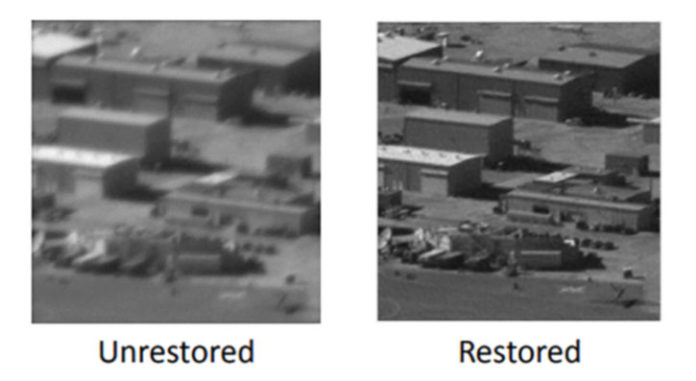
The U.S. Air Force Research Laboratory (AFRL) awarded Leidos a prime contract to provide a multi-sensor technology for Combined, Hyperspectral Imaging, Infrared Search and Track, and Long Range Imaging (EO-CHIL) Program. The program goal is to develop technologies to defeat adversary anti-access and area denial (A2/AD) threat environments through the use of extended-range high-resolution imaging, hyperspectral sensing, and close-in imaging with expendable sensors used with drones and autonomous, guided weapons.
The EO-CHIL program will demonstrate concepts, components, and systems technologies to improve imaging performance for standoff high-resolution imaging (SHRI), hyperspectral sensing, infrared search and track (IRST), and sense and avoid (SAA) technology.
SHRI: According to AFRL requirements specified at the industry day last year, effective range is defined by National Image Interpretability Rating Scales (NIIRS) 5 or better image quality can be achieved – Both day and night imaging are within the scope of this effort. To deal with optical disturbances encountered over very long range observations, observation technologies in daylight could rely on high-density SWIR focal plane arrays (FPAs), large aperture lightweight optics and turbulence compensation. For night observation, high-density MWIR FPAs and improved optics for thermal devices would be used.
The stand-off hyperspectral sensing will focus on longwave infrared (LWIR) hyperspectral imaging (HSI), target detection, material identification and environmental compensation algorithms for HSI and sensors that would lead to the design of producible and affordable visible-through-shortwave infrared (V-SWIR) HSI.
Starring IRST: The IRST required by AFRL should employ a staring sensor that enables detection of threats at long range, through clouds and background clutter. The sensor is likely to use large format focal plane array with thermal sensors operating in the Mid-Wave Infrared (MWIR) band.
Sense And Avoid: designed for unmanned aerial systems (UAS), autonomous SAA will enable UAS to meet the Federal Aviation Authority’s (FAA) requirements for access to the national airspace. Until now the Air Force explored collision threat avoidance using SWIR and Laser Radar (LADAR) sensors. Under the current program other passive and active ranging methods will be explored, along with IR sensors, high-altitude operations etc.
The single-award Indefinite Delivery/Indefinite Quantity (IDIQ) contract has an 87-month period of performance and a total contract ceiling of $47 million.



















